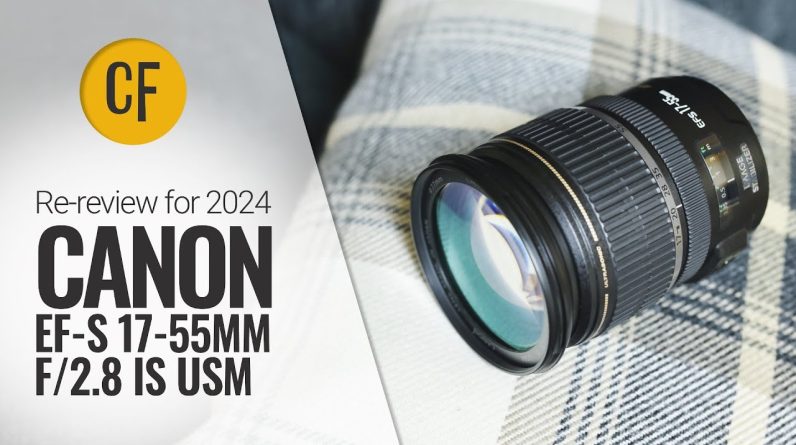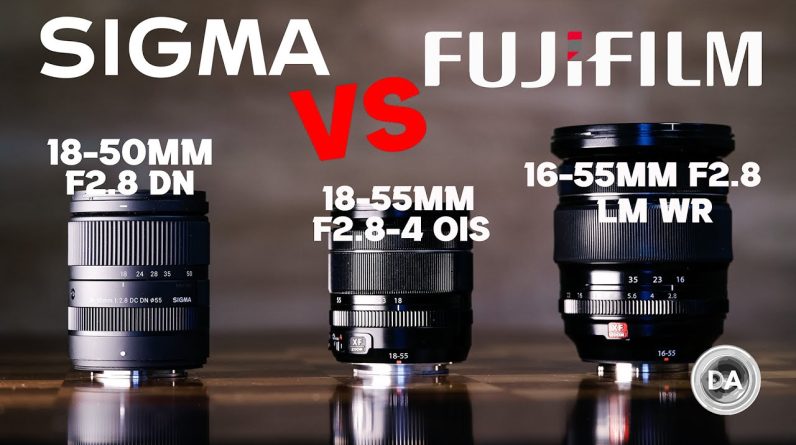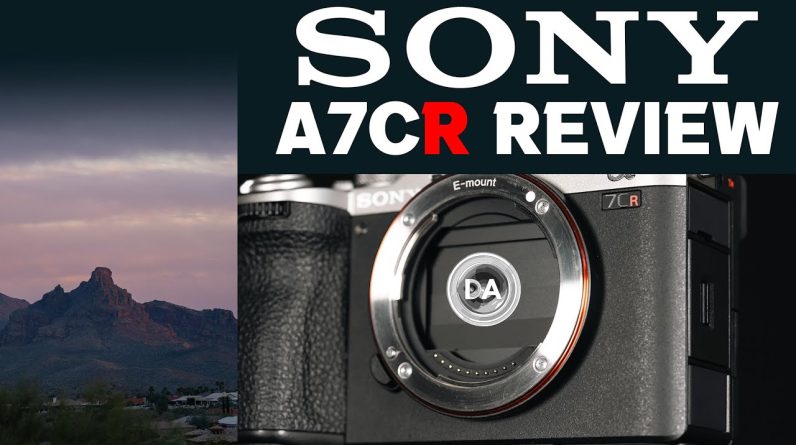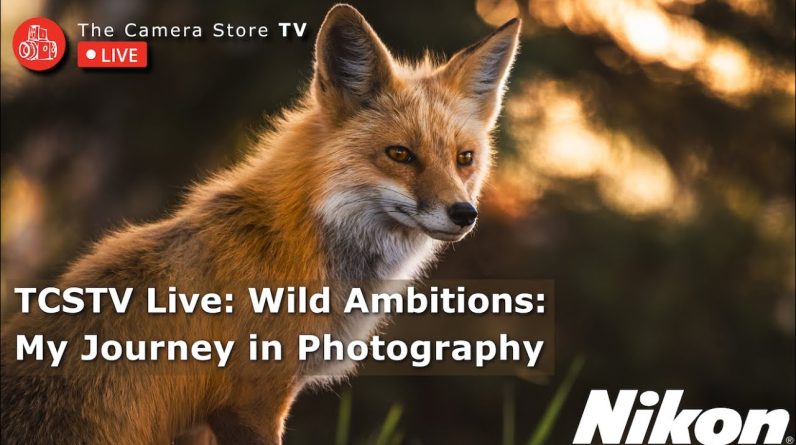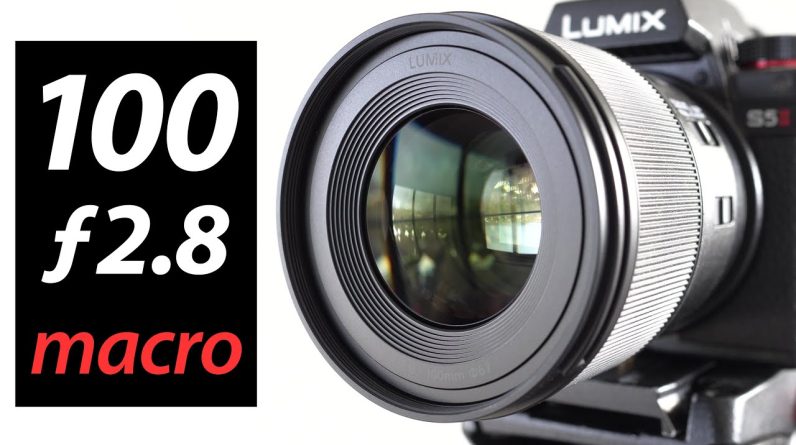[Music] Foreign Hi I'm Dustin Abbott and I'm here today To give you my definitive review of the New Sigma 60 to 600 millimeter F 4.5 to 6.3 DG dnos and this is from their sport Lineup this is a lens that um when I Reviewed it on DSL or at least the DSLR Version this is a new version for Mirrorless mounts in this case for Either Sony E or Leica L I've reviewed It on Sony email but I last reviewed it In a Canon EF mount back in the DSLR Days and at that point I was impressed By the zoom range which is an incredible 10-time Zoom range which allows you to Go from this at 60 millimeters and punch In all the way to this at 600 Millimeters obviously there's a ton of Applications for a zoom ratio like this But I am much more impressed with the Execution of this particular package Here on mirrorless than what I was back On the DSLR days and that is due to Several new updates new features that Come of a part of it including a Next Generation Optical stay stabilizer which Is way better and one of the most Impressive that I've seen as you'll see In just a moment and then also they have A brand new kind of Focus motor a new HLA Focus motor that vastly improves the Focus speed and the torque that's Available making this a much more
Competitive lens with the first party Sony options when it comes to tracking Though with one artificial limitation That we'll discuss in just a moment Overall however the killer new features That are part of this lens and a solid Execution when it comes to the optical Performance make this I think probably The best of the third-party telephoto Zoom options that are available and one Of sigma's best telephoto zooms to date And we'll discover why as we dive in Today's review first however a word from Our sponsor Today's episode is brought to you by Phantom wallet the minimalist modern Wallet that is now even better with the New Phantom X that is crafted from Aluminum right here in Canada it is 22 Percent smaller and 35 percent lighter While still making it easy to access Your cards and money when you need them Thanks to their unique Fanning mechanism You could even customize your wallet due To its modular design with accessories Like a money clip cash holder ID display And even chipolo and air tag tracking Integration visit Store.phantomwallet.com to check out Their unique sizes Styles and finishes That span from aluminum to Wood to Carbon fiber and use code Dustin 15 for 15 off when you're ready to check out So let's talk about the build the
Features and the handling here for a Moment the sport lineup gets sigma's Highest level of weather sealing Obviously designed around being used in More adverse weather conditions and so We've got a gasket at the lens mount We've got a special coating on the front Element to help to protect it and then We have seals throughout the lens at the Various rings at the various switches uh Buttons all of those things they are all Reinforced with seals making this a very Tough lens to use out in the field it's Designed for real world use not designed To just sit on a shelf beyond that we Also have a number of high grade Materials in the design this is a very Well made lens and so it includes some Materials like magnesium alloy as a part Of the design there is carbon fiber Infused engineered Plastics along with Some of their thermal composite Engineered Plastics to make for a lens That is tough and durable but also is a Little bit lighter than what the DSLR Version of the lens was we've dropped About 200 grams items but this is still A fairly heavy lens at 2485 grams or about 87.7 ounces and so That's some 360 or so grams heavier even Than the Sony 200 to 600 millimeter G-line so not a lightweight lens And as you can see it's not necessarily A small lens either it is 119
Millimeters in diameter or 4.7 inches And uh that widest point is obviously up Here at the front where we have a very Large 105 millimeter front filter thread Those filters are going to be a little Bit expensive and a little bit harder to Find because they're not particularly Common and that compares to a 95 Millimeter front filter thread on either The Sony 200 to 600 or sigma's own 150 To 600 sport lens the lens is 279.2 millimeters in length about 11 Inches however I will note that while You can see from this photo that Compared to the Sony it is shorter when Retracted however it does extend a long Way when you zoom it out to 600 Millimeters it gains another 100 Millimeters in length and so it's Actually something about 65 millimeters Or so longer than what the Sony is when It is fully zoomed out so it is uh Heavier and in a sense it is larger than In any of the other telephoto zooms on Sony but to be fair when you're talking About the Sony 200 to 600 that's a three Times Zoom range 115 to 600 millimeter That's a four time zoom range at 60 to 600 millimeters that's a 10 times a zoom Range and so there is a lot of extra you Know elements involved in that and the Design that has to go in to give you That great flexibility but it is an Incredible amount of flexibility
Now obviously when it comes to the Handling the best one in the field is Going to be the Sony 200 to 600 Millimeter why it's an internally Zooming lens which means that the zoom Action is just it's fantastic it's very Little rotation it is very easy to do You can do it with a finger uh you're Not going to be able to do that here the Weight is fairly heavy on this Zoom ring Right here and so as a byproduct of that It's not my favorite in that regard and It also takes a couple of rotations to Get it from 60 to 600 millimeters now it Is designed to also be used as a push Pull design where you can just grab Either the lens hood or the front of the Lens and you can push it out or or pull It out or push it back in I don't love That kind of action myself however it Might be the faster way to do things if You become accustomed to that action There is a bank of switches that is near To the actual lens mount and so it Includes an AF MF switch it has a focus Limiter with three different positions It has a two position Optical stabilizer And then off and so obviously one being Your standard two being for panning this Has a smart OS system and so it will Detect what kind of panning motion You're doing and help to accommodate for That and then at the bottom we have a Custom switch that has an off position
And then a C1 and a C2 Now if you're using the Leica L Mount Version of the lens you have the ability To use a a lens Dock and or USB Dock and You can program various functionality in Through that and so you can you know put In things like Focus limiter new Focus Limited positions things like that on Sony you don't have that option at this Point and so that means that basically You're going to have to rely on what C1 And C2 are already and basically what They are is additional means of control Over the optical stabilizer mostly how It's going to behave in the viewfinder And so you're a little bit more limited On the Sony platform when it comes to The custom aspects here now when you Talk about that Optical stabilizer that Is one of the huge upgrades here this is What they call os2 or a second Generation Optical stabilizer and Whereas on a lot of their previous Lenses including the most recent Sigma 150 to 600 sport lens here on Sony mount It was the optical stabilizers rated at Four stops this is rated at six stops on The telephoto end and seven star pops on The wide end and so that's very very Impressive obviously and in real life it Functions very well it really locks in That viewfinder and holds things very Steady while we're talking about for Video use where you can get great
Handheld video or when it comes to Getting Stills I was able to get this 600 millimeter shot at somewhere like Around I believe it was one tenth of a Second which if you you know do the math That is six stops at 600 millimeters and So it was a very very impressive Response to that and just in general This is one of the best Optical Stabilizers I've used so I'm impressed With this new technology from Sigma and Can't wait to see it filter on into some Other lenses along the way This lens also in terms of features it Has three different positions for a Focus hold button and so you know Whether you're shooting in vertical or Horizontal positions you'll have a focus Button hold button at hand also I will Note that there is a lock rather than Trying to do kind of a new kind of Friction thing that they had on the last Lens which 150 to 600 which I didn't Really love we've gone back to a kind of A traditional lock here so it will lock In two positions at 60 millimeters and Then it will also lock at 600 Millimeters though in the 600 millimeter Position it's easier to break it free Whereas at the 60 millimeter position Which where you're going to carry it for Transport you can't just rotate the lens To break it free you have to actually Employ the lock itself but some good
Design there Now the tripod collar here is fully Rotatable obviously it is not removable However and you can remove with not Tool-less but with tools you can remove The tripod foot and replace it with Another and I will note here that the Included tripod foot is ARCA Swiss Compatible which is my favorite type of Design also included from Sigma this is A nice big padded nylon case with Carrying straps it comes with the the Lens Hood itself is nicely made it is Fairly lightweight it uses a tension Knob here to lock it onto the front or In a reverse position for storage it Does have the rubberized front area to Help to prevent bumps or if you want to Kind of rest things standing up on that And then also you have two different Types of lens caps for storage you can Reverse this and then you can use this Nylon a cap that goes over the top that Also helps protect the lens Hood a bit Which is a good way to carry it when Transporting in something like the bag But you also have a traditional Traditional pinch cap style that is Included in the Box as well so as far as The handling goes I find that the lens Obviously is going to be heavy but the Balance is fairly good I noted with the First generation on dslrs the first 150 To 600 millimeter sport it had a lot of
Weight far out from your body and so it Was a hard lens to support whereas in This case it feels like the balance Point is near the middle and as a Byproduct it is heavy and if you're not Accustomed to a larger lens like this You're really going to notice the weight But I do find that the weight is fairly Well balanced so it's a little less Fatiguing to use out in the field So let's talk about the autofocus as Noted there is a whole new Focus system Here a first for Sigma which they call HLA which is high response linear Actuator this is a linear type Focus Motor but it is a high torque version That gives you dramatically better focus Speed and as you can see here focus is Pretty much instantaneous whether you're Doing big or small Focus changes and Whether or not you're shooting at the Wide end or on the telephoto and Autofocus is just very quick and it Almost seems almost predictive you kind Of think where you want to focus and by The time you have to press the focus Button it is there so very very fast and That extra torque also leads to in my Opinion higher Focus accuracy and it's a Byproduct I had very good Focus accuracy Using this lens because it just quickly Gets there and so there's no you know Kind of hesitation when you're arriving At the destination and so I had very
Good Focus accuracy for all the various Subjects that I used and that included When it came to tracking now I I didn't Find either the previous Sigma tell Photo options to be at par with either You know the Sony which obviously There's some advantages for the Sony 200 To 600 it's a very very good lens but Even when compared to for example like The Tamron 150 to 500 millimeter I felt Like it delivered a little bit better Focus accuracy and a little bit for Better focus speed Sigma has really helped to solve that Problem here and so as you can see from These shots that throughout the each one Of these bursts are about 125 frames That throughout them they're not Shooting on the Sony Alpha One you don't See any shifts forward or back focus and I can say from the visual confirmation That that I that the eye stickiness was Very good it locked onto the eye it Stayed on the eye throughout as my Subject kind of looked side to side some Eyes kind of close it stayed locked on And even when getting close to the Camera did a very good job of Maintaining Focus there so I was very Impressed with that now there is an Artificial limitation here that I do Have to note the sequences you've just Shot were at 15 or just saw were at 15 Frames per second which is the cap
That's Sony puts on any third-party Option mounted to one of their Sports Bodies and so in this case with the Alpha One if I put the Sony 200 to 600 On there I can do 30 frames per second And you can see how much smoother kind Of just a playback footage looks like Because instead of 15 frames per second It's 30 frames per second and so you Have less pause in between eight each Individual movement so it basically Looks like slow motion video when played Back in this way and so obviously that Is an advantage if you really want to do Lots of frames per second so on the A9 Series you can get 20 frames per second With a Sony lens or on the Alpha One 30 Frames per second whereas the sigma You're going to be limited on either Body to only 15 frames per second That's not sigma's fault that is a way That Sony's putting a thumb on the scale To influence towards buying first party Sony lenses I will note also that iaef Worked very good whether it was human or Animal subjects again with very good Stickiness and as you can see very good Focus on the subject there So let's talk about the image quality Here the MTF charts as you can see Suggest a consistent performance across The frame with you know good not Exceptional performance in the center of The frame but very little drop off
Towards the edges and a very consistent Performance both at different Zoom spots But also fairly consistent in terms of What you're going to see across the Frame so we're going to dive in and look At that in detail along with some Comparisons to both the Sony 200 to 600 And the sigma 150 to 600 millimeter Sport let's take a look and see what we Find so first of all I just want to Quickly revisit just how useful this Zoom range is and so here you can see a Kind of a very moody gloomy type Landscape 60 millimeters and then you Can see zoomed into 600 millimeters just I mean and obviously that's this section Right here but just how much potential Is there for that Zoom ratio second shot Here you can see aspects of this dock Here and you can see at 60 millimeters And then at 600 millimeters again that's Just there's so many applications for a Zoom range like that so obviously Sigma Lenses do enjoy good profile support However I do want to quickly show you What it looks like with the corrections Turned off and so at 60 millimeters There's a mild amount of pin cushion Distortion a bit of vignette nothing too Extreme here I achieve this manual Correction with a -2 in terms of the Distortion and a plus 56 on the vignette So I'm fairly happy with that result at 60 millimeters
Jumping to the middle of the zoom range At 300 millimeters you can see the pin Cushion Distortion is a little bit more Pronounced as is the vignette in this Case correction took the form of a minus Five to get rid of the vignette and just A are assuming to get rid of distortion And just a little bit more at plus 59 to Eliminate the vignette here now if we Jump ahead to 600 millimeters we can see That just my correction result here the Pincushion Distortion is back to roughly What it was at 60 millimeters and the Vignette is reduced to the lowest level We've seen to this point so at no place Would I consider this to be extreme at At most it's about two stops in the Corner really not all that bad all Things considered I'm gonna show you Real world results for longitudinal Chromatic aberration here uh for one Thing you can see at 600 millimeters and Wide open at 6.3 you can see a nice Crisp result on the subject but then if You look at this snow along here Particularly this upper Edge where there Is some light and a transition you can See just the faintest hint of it maybe Wanting to have some fringing that Really isn't there but overall a Fringing really well controlled in that Shot another shot here with kind of Shiny surfaces places where you know you Could see fringing along here and again
I can see just the beginnings of a bit Of fringing but really really well Controlled in these transition type Areas nothing there to be concerned About and in this kind of bright almost Specular type highlight no real fringing There no real fringing here and looking Towards the bokeh highlights I don't see Any kind of fringing around them One final example shows you just another Kind of real world example first of all You can see detail is really really nice Here but then if you look towards this Area here this kind of inside of a vinyl Window frame you would see with the Light coming through a lot of times They'll be fringing along there it's Very neutral so nicely controlled Likewise with lateral chromatic Aberrations here a crop from the edge of My test chart and again just the Faintest bit of uh just kind of a hint Of fringing there but nothing really Pronounced and so overall Longitudinal chromatic aberrations and Lateral chromatic aberrations are quite Well controlled with the lens So let's take a look at our performance When it comes to the resolution and the Contrast and so I'm shooting on a 50 Megapixel Sony Alpha One and showing you Results here at 200 percent so in the Middle of the frame 60 millimeters F 4.5 Results are nice and crisp good detail
There if we look towards the mid frame Mid frame also looks really really good And uh and then if I look even down Towards the very corner here we can see That everything looks really great there As well a very strong performance wide Open Here if we stop down um to F 5.6 we can See that contrast has improved somewhat In the center of the frame likewise in The mid frame and towards the corner but Not a significant Improvement if we jump On to f8 things look largely the same And on high resolution bodies as you go Higher than that diffraction often Starts to offset any kind of optical Gains you might see otherwise though I Would say here that f8 in the corner Looks a little bit crisper than what F 5.6 did Now I'll show you minimum aperture just Once here and that's mostly because You're going to see a similar result Throughout and you can see that Diffraction has really robbed a lot of Contrast even compared to the wide open Result and so as per usual I typically Recommend that to stay at f11 or lower If you're on a higher resolution body Just because diffraction really does Start to rob you of a lot of image Quality moving on to 100 millimeters and We can see that the performance in the Middle of the frame is just a little bit
Softer than what I saw at 60 millimeters By f8 looking nice and crisp mid frame Um the biggest jump here you can see in Mid frame comes to do with the contrast And in the corners Corners are pretty Similar but don't sharpen up quite as Much although contrast does improve as You stop The Lens down now at 150 Millimeters I'm going to show you a Point of comparison and that is with Sigma's own 150 to 600 millimeter DN Sport lens and so here both of them at Similar settings you can see that the 60 To 600 millimeter is it is delivering a Little bit better contrast a crisper Result if we move off to the mid frame That becomes really quite obvious that The 60 to 600 millimeter is much better In terms of its resolving power and down Into the corner also very very obvious So it shows just how strong a Performance we're getting here across The zoom range Now as we get to 200 millimeters it Opens up another potential candidate for Comparing two and that is the Sony 200 To 600 millimeter and so here Um I'm gonna just line these up a little Bit better you can see that the Sony is Ever so bit sharper in the center of the Frame and the MTM F charts would suggest That you can just see just a little bit Better contrast and detail over here on The Sony though I'll also point out
They're really really not all that Different more similar than different Likewise in the mid frame I would say That they are more similar than Different a fairly consistent Performance between the two of them and If we move off into the corner we can See that the they're again highly Similar results though with maybe just a Tiny Edge for the Sony Now if we compare the two Sigma lenses At 200 millimeters we find that they Perform pretty similarly in the center Of the frame obviously the exposure is Just slightly different between the two If we look off towards the mid frame However again the advantage of the 60 to 600 millimeter starts to shine through It's just holding its sharpest much Better looking down towards the corner That's even more obvious that it's just Much crisper out towards the edge of the Frame pretty impressive considering that Extra Zoom range Again if we check in with the two sigmas Around 400 millimeters we find a similar Truth though in this case I think that The 6600 maybe looks a hair better here In the center of the frame just a little Bit better detail showing up there in The mid frame in this case the advantage Is not as strong and so here the 150 600 Is a little bit better towards a mid Frame and so I think that they're more
Similar than different and then if we Look towards the corners of the frame Pretty consistently the it's always a Little bit better looking at the 60 to 600 millimeter now if we throw the Sony Into the mix the Sony is pretty Obviously better in the center of the Frame at 400 millimeters it is Definitely has better contrast just Crisper looking if we move off to the Mid frame we find a similar truth to Where the 200 to 600 is just it's pretty Obviously better looking in the mid Frame and that's pretty obvious even Down in the corners where the Sony is Just really really strong whereas the Sigma is a little bit weaker by Comparison so finally if we jump out to 600 millimeters we find again starting With a comparison to the Sony that the Um you know the 60 to 600 is fairly Close I give a little bit of an edge to The Sony but it is not by much we pop Down into the corners we see that They're actually quite similar in the Corners very little difference at 600 Millimeters again I would say the Slightest Edge I give to the Sony but I Doubt you'd pick it up if they weren't Side by side we move back to the mid Frame we find that again the difference Is not as pronounced here the the Sony And the sigma are pretty close in Performance in the middle of
Now once again if we compare the 60 to 600 millimeter to the 100 to 50 150 to 600 millimeter both Sigma lenses we find At 600 millimeters that the uh the 60 to 600 is obviously sharper in the center Of the frame in the mid frame it has a Slight Edge as well though not as Pronounced down into the corners it is The sharper of the two lenses and so Overall a pretty awesome performance Considering how big the zoom ratio is Here now to give you a look at some real World shots to put that all in Perspective here we have 209 millimeters Shot of Nala here you can see that it Looks just really really crisp a great Detail there on that shot another shot Here at 600 millimeters and you can see That even at the you know the higher ISO The setting that we've got for this shot Because of the lighting and also a Fairly low shutter speed here that's Only shot at 1 15 of a second shows you How good the OS is because that's a Still a pretty good result All Things Considered there and then in little bit Better conditions here outside though Still at IC ISO 1600 you can see that The detail here is really nice and crisp Another shot of this a little squirrel Here and so you can see even at 600 Millimeters wide open we're getting good Detail in the shot now this gives you a Look at a minimum Focus distance at 60
Millimeters in the amount of Magnification you can get you know a Good end result and a nice amount of Magnification at 600 millimeters you can See that we don't have as high of Magnification and a much lar longer Minimum Focus distance though again the Detail is still pretty good the highest Magnification comes at 200 millimeters Where the minimum Focus distance is not Much higher than 60 millimeters but you Got a very high level of magnification Now detail isn't quite as high here at This level but the amount of Magnification you can get is obviously Very high this shows you you know with a Chess piece just how much magnification I was able to get at that 200 millimeter Shot at minimum Focus distance let's Talk for a moment about the bow quality You can see obviously at 600 millimeters You have the ability to really Crush Backgrounds even if the magnification Isn't as high that focal length gives You great compression on the background And so really nice and soft here's Another shot here where you know the Detail is is nice you can see the Falling snow it was a a wild time while I was out for this particular shot and Then here a little less wild but you can See you know good detail there but the Background is really nicely blurred out At 200 millimeters obviously you have
The highest ability to create background Blur in terms of specular highlights at A medium distance so in this case you Can see how I create huge highlights and You can see the the geometry is really Quite nice here so that's definitely an Added benefit for the lens now flare Resistance on the telephoto lens are the Telephoto end was really quite good in This shot I was shooting through frosted Branches right into the sun very very Bright conditions and very little Negative effect for shooting into the Sun when I shot at a wider focal length Here this is 60 millimeters in F 6.3 you Can see there's a bit of ghosting Artifacts when I stopped down to f11 Here you can see that there's just a Little bit more of a ghosting pattern Overall in real world use I didn't Really have much of a problem with Flare So again a fairly strong performance so Obviously I consider that to be a pretty Impressive Optical performance when you Consider how big of a zoom ratio we have Got here and the fact most obviously When you're comparing it to the sigma 150 to 600 that basically you're getting Consistently better performance out of This lens considering it has a 10 times Rather than a four time zoom ratio is Really very very impressive So in conclusion you have to consider Price as a part of this so the way that
You differentiate between the two Sigma Models is that the 150 to 600 sport is About 500 cheaper than what this lens is This one comes in at about 2 000 US Dollars which puts it roughly on par With the Sony so that also means you're Going to choose between these two lenses If you're shooting on the Sony platform If you're on the Leica that's obviously Going to be a different type of decision But on Sony you have to consider a Couple of things I prefer the Sony Handling in the field that Zoom is a big Deal to me also having the benefits that On Sony with the Sony 200 600 you can Use Sony teleconverters whereas you're Limited to not be able to do that on the Sigma and again that's a Sony introduced Or Sony induced limitation that Teleconverters can only be used on Sony Lenses on the Sony platform and so again Another place where Sony's put their Thumb on the scale but that is a real World consideration also you have the First the faster burst rate available if You're shooting with one of the Sports Cameras and so if you happen to shoot With one of those Sports cameras and you Want maximum frames per second you Probably want to go with the Sony 200 to 600 or some similar lens even though it Is more limited in its Zoom ratio if That's less of a big deal for you and Maybe you're more of a wildlife
Photographer and 15 frames per second is Enough for you that Sigma Zoom range is Really really impressive I also prefer The optical stabilizer here and the Maximum magnification level that is Offered by this lens as far as Versatility goes this is at the top of The Heap because of that amazing um you Know Zoom ratio and also some of these Cooler features and I would say that the Focus accuracy and tracking capabilities Are fairly on par at this point you have A similar feature set and build quality And so it's a byproduct of that I think It comes down to what matters more to You do you prefer or the you know that Burst rate or do you prefer the Flexibility of the larger Zoom ratio and If you answer the zoom ratio then very Obviously this is the lens for you what I can say definitively taking Comparisons off the table is that this Is a very valid option this is a killer Lens that has Strong Optical performance Amazing autofocus and really incredible Optical stabilization and of course an Incredible incredible Zoom range and That makes it a very intriguing addition To both the Sony E and the Leica L Platform I'm Dustin Abbott and if you Look in the description down below you Can find linkage to my full text review Also to an image gallery there are Buying links there if you want to
Explore that as well also linkage to Follow myself for Craig on social media To become a patron to get channel Merchandise please like And subscribe Thanks for watching have a great day and Let the light in [Music] Foreign

